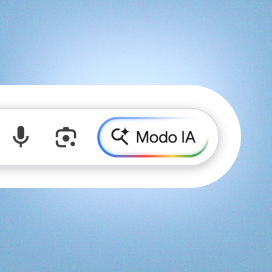Written by Fernando Maciá
Index
Foreign investment in real estate in Spain totaled 4.84 billion euros at the end of 2006. This represents a 12% drop compared to the previous year and confirms a downward trend that began in 2005. There is a general consensus that the high prices of housing in Spain, with a special emphasis on the areas preferred by foreign buyers – the coasts – together with the slow but progressive rise in interest rates, are the two factors that have been identified as the main culprits of this decline in the volume of investment. The latest wave of urban planning scandals in some traditional tourist destinations and the protests of foreign owners over the Valencian Urban Planning Law have not exactly helped to reverse this trend either.

The increasing penetration of the Internet, however, has changed the rules of the game. Potential homebuyers have learned to surf the Web in the virtual hunt for the home of their dreams, so they have a level of information and documentation that was unthinkable a few years ago. Today’s real estate portals offer you all kinds of information: photographs of the property and the area, perspectives, possibilities of finishes and renovations, virtual tours, extensive documentation of the surroundings, average prices per square meter for the area… Perhaps this is why prospective foreign buyers prefer to visit different websites in the privacy of their own homes, in a way that they are not subjected to any commercial pressure, and extract from them the necessary information to later establish contacts and interviews, on a well-documented basis, with the companies they are most interested in.
The immense potential of this tool is only now beginning to be discovered. And it is just as the pace of sales has begun to slow that many developers are making a smooth transition from the model of overseas delegated marketing to direct marketing using their own website as the main showcase. Hotel showrooms, inspection flights and expensive full-color catalogs are giving way to virtual prospects, multilingual call centers, real-time chat with the sales representative and downloadable PDF brochures.
So, despite the downward trend of recent years, there is a light at the end of the tunnel. Germany’s recovery seems to be just around the corner, price hikes have moderated and the prospect of lower inflationary pressure suggests that interest rates will not continue to rise much further. To make the most of the opportunities that can open up in this new scenario, it is important to understand the key aspects that can influence the greater or lesser success of a real estate portal that aims to market housing in foreign markets. Most of these factors are related to a common concept: localization. It is about presenting, arguing, informing and competing in search engines from the perspective of the client we are targeting.
Locate product information
If we look at the web traffic analysis of any real estate portal, we will discover that it is very easy to identify a search pattern that is repeated over and over again: “type of property” + “location”, such as “villa in Marbella”; “apartment in Benidorm” or “semi-detached in Santander”, for example. So we can reasonably suspect that the first choice a potential real estate buyer makes is the what, while the second is the where. That is, what type of home you would like to buy and where you would like to buy it. Another question is whether that what really exists in the desired location and, finally, at the price one is willing to pay.
Having solved these three aspects – type, location and price of the property – we could presume that someone who has to initiate an important business deal (the purchase of a property is usually one of the most important transactions that most people make in their lifetime) with a company located in a foreign country and to which the media have not always done justice, will most probably ask himself from whom I am going to buy my home. In other words, am I going to deal with a reliable and solvent company, am I guaranteed the money that I will pay on account for the purchase of my home, does it offer me sufficient guarantees that they will respond to possible claims once the sale is formalized, and does it offer me sufficient guarantees that they will respond to possible claims once the sale is formalized?
Finally, and also directly related to the distance and the knowledge that the buyer from another country may have of ours, we could identify an additional type of information related to the how If a home purchase in Spain by a foreign buyer materializes, with all that this implies: legal and fiscal obligations as well as the financial aspects involved, would it be better to take out the mortgage in Spain or in my country of origin, what taxes will I have to pay, what expenses are involved in the purchase of a home, what are the documents I have to sign, and when? etc.
In its role as a virtual marketer, a real estate portal must be prepared to answer these and many other questions posed by the potential foreign buyer. Let’s look at each of these four separately.
Product information
Experience shows that product sheets are the heart of any real estate portal. If a website offers a portfolio of 20,000 properties, for example, this should be the minimum number of pages indexed in Google for this portal. The way to know the total number of pages that Google has crawled from your site is as simple as entering the command site:www.misitio.com (or .net, .es, etc.) in the search box. Google will return a list with the total number of pages of our portal that it keeps in its index. If the number of pages is much lower than the total number of properties on offer, then it is possible that we have an indexability problem whereby the search engines are not being able to index all the content of our website. We must check that the property files do not open in a new window(pop-up). If so, we must change the structure of the web so that the property files open in the same window in which we are currently browsing.
How to make searches crawlable
We must also check that the only way to navigate to a property file is not as a result of a query in an internal search engine (of the type in which we choose type of property, number of rooms, maximum price, etc.) since the search engine robots cannot use these forms to reach the pages. The property search forms thus become insurmountable walls that prevent Internet search engines from indexing all the property files. If this is the case, we should provide direct links pointing to pages where properties are grouped by certain search parameters: “apartments in Alicante”, “new apartments in Madrid”, “villas in Benalmádena”, etc. These listings will contain microfiches in which these expressions will be naturally repeated which, as we have already seen, respond to the most common formula for searching for properties in search engines: “type of property” + “location”, which will favor the positioning of these grouped results pages in search engines. Each of the property microfiches displayed should contain a link to the product page, so that we facilitate the transit of search engine robots to the page of each specific property.
Optimize pages
It goes without saying that these pages must have a title that matches their content (the page of new apartments in Madrid should be titled “Pisos nuevos en Madrid con Inmobiliaria XXX” and not a generic title such as “Bienvenido a Inmobiliaria XXX” or, even worse, no title at all). In the same way, the property file must be titled individually: “Buy new apartment in Madrid with Inmobiliaria XXX” or similar formula.
These pages with properties grouped by the most common search terms also have a positive impact on the usability of the website. It has been found that certain types of users prefer a more visual search, “pecking” at the microfiches whose images and prices they find most attractive from those presented on these results pages rather than following the more “logical” path of defining the selection criteria in the internal search engine form.
Programmed in this way, each of our web pages becomes a bait cast into the fishy waters of the Internet search engines. If our property listings are not listed individually in the search engines, we are losing a huge potential for qualified traffic, as we will only be reaching potential users through brand recognition. And getting a good branding implies a huge economic effort in promotion and advertising in the long term.
Internationalization
If, in addition to listing each property in the search engines, our website has several versions in different languages, logically we are multiplying the number of “hooks” with which to catch potential users of our portals. From this point of view, competing in different languages has a significant advantage: having a website in Swedish, Norwegian or Dutch allows us to compete in less-traveled areas: there are far fewer real estate websites in these languages than in Spanish, English or German.
But competing adequately in other languages also implies knowing exactly not only how a native of another country will refer to a certain type of product (an Englishman, for example, does not use the term “bungalow” to refer to a semi-detached house, but “attached” as he also calls “villa” what we familiarly call “chalet”) but also the concrete way of arguing the qualities of the product. Thus, the reasons why a Spaniard might buy a “villa” in the vicinity of Fortuna in Murcia are probably very different from those that would motivate the sale to a German or an Englishman. This is why home descriptions cannot be a simple translation of features from Spanish to English, but must be argued from the potential buyer’s own perspective. If for a Spaniard a villa in Fortuna is the way to have a detached house at a lower cost than the same house in Murcia, for an Englishman it is the guarantee of being able to “toast” in the sun all year round.
Web Structure
Finally, in order to compete properly in search engines in other countries, we must take into account that the different national search engines tend to introduce a bias in their results that favors websites geolocated in the same country. Well, Google.es, for example, tends to present in first positions, under equal conditions, domains ending in .es or .com domains hosted on Spanish servers (which distinguishes through its IP number). Another way in which search engines assign a “nationality” to a given domain is through the nationality of the domains that have links pointing to it. So if we want to compete with advantage in the search engines google.co.uk (Google UK) or de.yahoo.com (Yahoo! Germany) we must, at least, some of these conditions:
- Have a domain with a country code. That is to say, a domain ending in .co.uk, .de, .fr, etc.
- Or have a website hosted on a server with an IP belonging to the country in which we want to compete.
- Or have subdomains (such as uk.mydomain.com) or subdirectories (www.midominio.com/uk/) with a sufficiently high number of links from geo-located domains in the country where we want to compete (in this case, domains ending in .co.uk).
Environmental information
The information on the surrounding area is based on the question: where do I buy? In this sense, and putting ourselves in the shoes of the foreign buyer, we can intuit that the interest in the surroundings of the property covers a wider area the further away the potential buyer is. Information about the environment contains two facets:
- Information about the environment
- Information on what the environment offers me
Within the first group, we could include the description of the usual climate of the area – rainfall data, average hours of sunshine in the different seasons, etc. – description of the orography – mountains, proximity to the sea, beaches – as well as the physiognomy of the neighborhood and the urban environment where the house is located: residential area with large green areas, urban area, historical center, rural housing…
Third-party environment information
Not all of the functionality needed to display this information has to be developed from scratch. Google Earth, Google Maps, The Weather Channel and many other specialized websites can act as external providers of different types of information and functionalities that we can integrate perfectly within the content of our own pages, providing them with a much higher level of information than we could achieve using only our own resources.
In some North American portals, such as realliving.com, we can find environmental data such as:
- Number of inhabitants
- Average age
- Average number of children per couple
- Percentage married
- Average income per dwelling
- Percentage composition of the population by level of education (elementary school, high school, college)
- Percentage of people of each race…
- Even percentage of workers called “blue collar jobs” or “white collar jobs” (to designate people doing technical jobs, manufacturing, etc. as opposed to administrative jobs)!
And all this data is presented to us in a comparative table for the city, county and state. In localreply.com, we also find the employment and unemployment rate of a given municipality or area (sorted by zip code) and even the crime rate.
Examples in the United States
This level of exhaustiveness in the amount of information available on the immediate environment in the North American portals is really striking. In a country where social mobility is very high, it is normal that those seeking housing in an unfamiliar area require this level of information. In a much smaller country like Spain, where distances and differences may not be so great, this amount of information may not be justified. But we would have to think that it would be really welcomed by potential foreign buyers, as it would help them to get a composition of what they can find and reduce the degree of uncertainty regarding the multiple factors involved in a move of residence or a purchase of a new home with expectations of moving to it in the future.
The second group includes all those endowments, services, facilities and attractions offered by the environment. From the perspective of a potential foreign buyer focused on either a vacation home or a retirement home, aspects that could be of interest to them would include, among others:
- Accessibility to communications: proximity to highways, airports, ports, train stations…
- Shopping areas, in particular where they can find products from their own country or where they can be served in their own language.
- Professional services, especially if they speak your language: lawyers, tax advisors, veterinarians, renovation and decoration companies…
- Medical assistance services
- Schools, in particular those that can teach in your language or even follow the curriculum of your country (British Council, French Lycée, European School…).
- Sports facilities: golf courses, gyms, marinas, riding schools, etc.
- Tourist attractions: leisure centers, amusement parks, theme parks, museums, theaters, auditoriums, historical centers, monuments, gastronomic events, traditional festivals and celebrations, open-air markets, crafts, etc.
All these aspects are also part of the attractiveness of a particular property, they are advantages that the property does not have in itself but because of its location. Learning to identify and value them will allow you to argue them properly in the eyes of the foreign buyer.
Company information
The information about the company answers the question ” who do I buy from? Unfortunately, Spain has a long history of real estate horror stories abroad. With greater or lesser real basis, the traditionally accepted “payment in BThe sale of properties on undeveloped plots of land or simply outright fraud are burdens that we carry from the past and that are added to a present in which the latest real estate scandals – with the dissolution of a city council such as that of Marbella and the demolition of homes acquired by the British – or the application of controversial laws such as the Valencian Land Law do little to foster the trust necessary for a fluid commercial relationship with European buyers and threaten the hard-earned prestige of companies that have done things well.
Buyers want to know who they are dealing with
Buying a home is an operation that involves a great risk in itself, since it is usually the most important purchase of our lives. If we add to this the lack of knowledge of the language and customs of another country, as well as the lack of notoriety that many promoters may have in those countries, the perception of risk increases. And the fame, deserved or not, of Spain as a paradise for real estate speculators contributes to the fact that foreign buyers face the adventure of acquiring a home in our country with an attitude that ranges from mere suspicion to the utmost caution. It is in this context where it is justified that a real estate portal provides all possible information about the seriousness, trajectory, history and ethics of the company. Among other important aspects, the portal should reflect:
- Date of incorporation of the company and its history in recent years through its most relevant milestones.
- Human resources, headquarters, sales offices, etc. everything that helps to make tangible a presence that, at the moment of visiting the web, is only virtual.
- Mission/vision of the company, with special mention of its objectives and ethics in its performance.
- Quality certifications, approvals, membership in professional associations, awards and recognitions, etc. that the company can present as official accreditations to endorse the quality of its service.
- Most important promotions delivered in the past. If you can include testimonials from satisfied buyers, all the better.
- Presence of the company in the media: reproduce articles in the local press where the developer or real estate company is mentioned in relation to its promotions, sponsorships, etc.
- Corporate social responsibility: provide data on how the company gives back to society part of its profits in the form of sponsorship, patronage, etc.
- Bank guarantee for deposits made: image of the logo of the bank that provides the financing and guarantee
Information on procedures
The last leg in this journey through the objectives that a website focused on foreign markets must meet has to do with information on the procedures, legal requirements, financing possibilities, customs and habits when it comes to completing the purchase of a new home. It is about answering the ultimate question: how do I buy a home in Spain?
Real estate portals do not usually provide much information on this issue. We find, in fact, articles, step-by-step guides and testimonials on other more generic portals, such as justlanded.com, euroresidentes.com and the like. It seems as if the managers of some real estate portals are “afraid” that their potential clients may have “too much” information. The fact is that this information is available on the net and a simple Google search is enough to find dozens of pages where the different steps and procedures to successfully complete the purchase of a property in our country are described from multiple perspectives, wouldn’t it be a sign of transparency to include this information in the real estate portals themselves, wouldn’t it help to generate a higher level of trust if the promoter were the first one interested in providing his potential client with all the elements of judgment to make a choice and a purchase decision with greater knowledge?
Practical information on how to buy a home in another country
Let’s go back to the initial question: a real estate website is just another office, just another salesperson, and we must provide it with all the resources, all the necessary sales arguments, not only to highlight the virtues of the product, but also to help the potential buyer to overcome the many obstacles that separate him from the home of his dreams: lack of knowledge, distrust, the need for financing, the urgency of making an educated decision based on knowing all the facts. Aspects related to procedures could include information on:
- Advantages of subrogating to the developer’s mortgage vs. applying for a new mortgage
- Comparison of mortgages in Spain and in your own country
- Comparison of the cost of living compared to your home country: what will be the purchasing power of your pension, for example?
- Common steps and documents for off-plan purchases, turnkey purchases, second-hand homes, etc. and the associated costs: notary, registry…
- Information on your rights: warranty periods, the possibility of claiming repairs after delivery in the event of deficiencies, guarantee of deposits made on account, etc.
- Possibilities of locating your permanent residence in Spain: voting rights, possibilities of starting a business in our country, obligation to register the vehicle, medical assistance rights, etc.
This is just a sample of the type of information that a potential home buyer abroad may require when deciding to purchase a home in Spain. The price level reached by the real estate supply in our country has slowed down sales. Developers focused on the sale of second homes to foreigners are no longer competing among themselves, but mainly with the appearance of new poles of attraction for real estate capital in other countries which, enjoying similar weather conditions to Spain, will represent stiff competition in the future once political and social stability is achieved due to their lower real estate exploitation, lower prices and lower cost of living. The key to attracting an increasingly distrustful, demanding and informed clientele may lie in a greater degree of elaboration of the information provided through the Internet.



